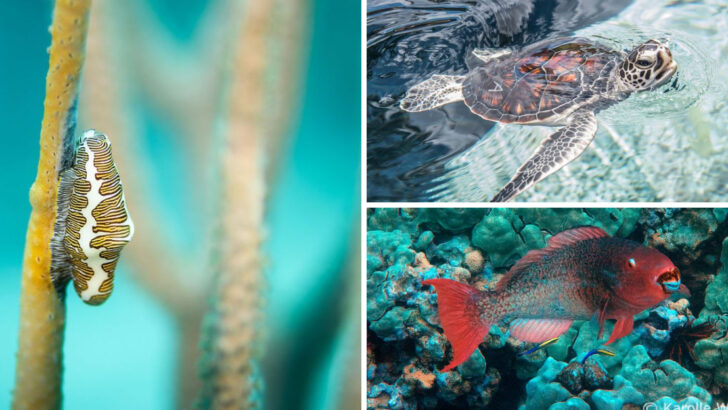Hawaii isn’t just about swaying palm trees and postcard-perfect beaches—it’s a wild paradise bursting with creatures you won’t find anywhere else. From the volcanic slopes to the deep blue waters, this island chain is home to some of the most fascinating animals on Earth.
Giant sea turtles glide through crystal-clear waves, while tiny, elusive birds flit through the rainforest. Some species have lived here for millions of years, untouched by time. Others arrived unexpectedly, carving out a place in this tropical wonderland.
Whether it’s the mysterious monk seal basking on a hidden shore or a gecko sneaking into your beachside bungalow, Hawaii’s wildlife is full of surprises. Some are native treasures, while others—brought by humans—have made their mark in ways both beautiful and destructive.
Get ready to meet 25 extraordinary animals that call Hawaii home, from the depths of the Pacific to the peaks of its ancient volcanoes.
Hawaiian Monk Seal
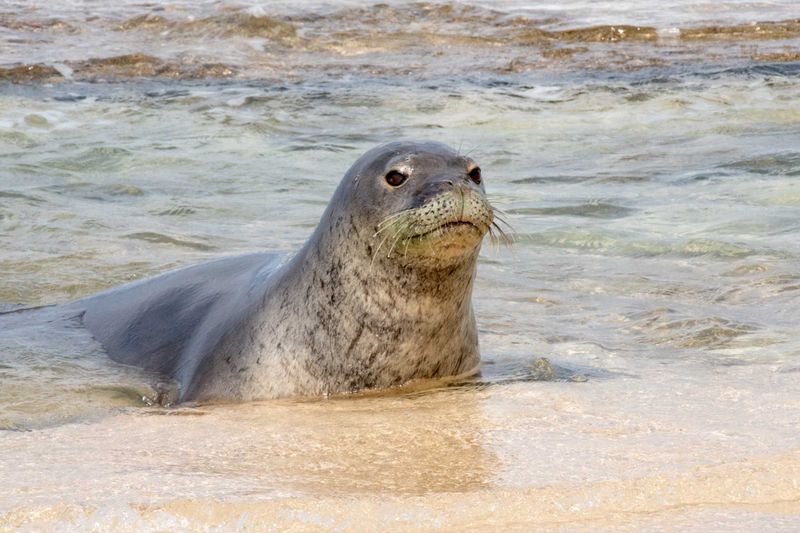
The Hawaiian Monk Seal is a rare marine mammal that calls Hawaii home. With only about 1,400 seals left, they are an endangered species protected by law. These seals can often be seen lounging on the beaches of the Northwestern Hawaiian Islands. Their diet mainly consists of fish, octopus, and crustaceans.
These seals are unique for their solitary nature, choosing to hunt and rest alone. Conservation efforts are crucial for their survival, as they face threats from human activities and environmental changes. Witnessing a monk seal is a special experience, reminding us of the islands’ natural beauty.
Nēnē (Hawaiian Goose)
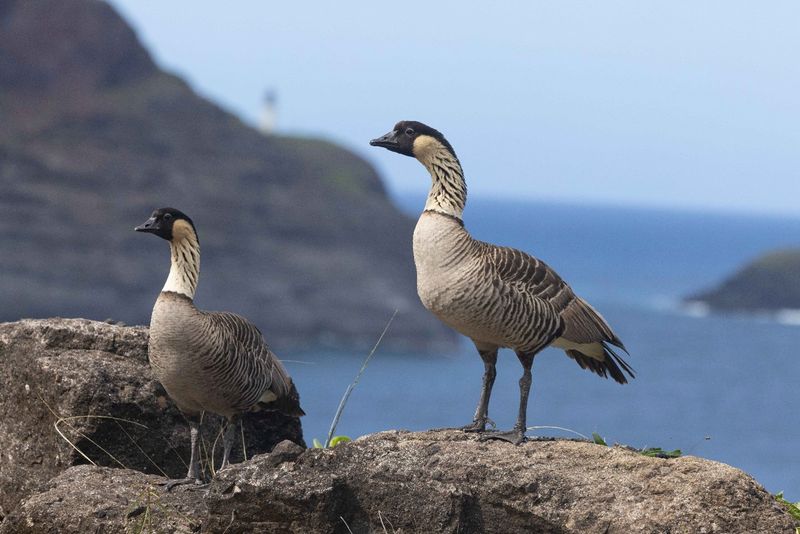
The Nēnē, or Hawaiian Goose, is the state bird of Hawaii and is found in the wild on the islands of Kauai, Maui, and Hawaii. This goose is characterized by its soft gray and black plumage and the unique banding on its neck.
Nēnē were once near extinction, but conservation programs have helped their populations recover. They thrive in a variety of habitats, from grasslands to mountain slopes. Observing Nēnē in their natural environment offers a glimpse into Hawaii’s commitment to preserving its native species while maintaining ecological balance.
Humpback Whale
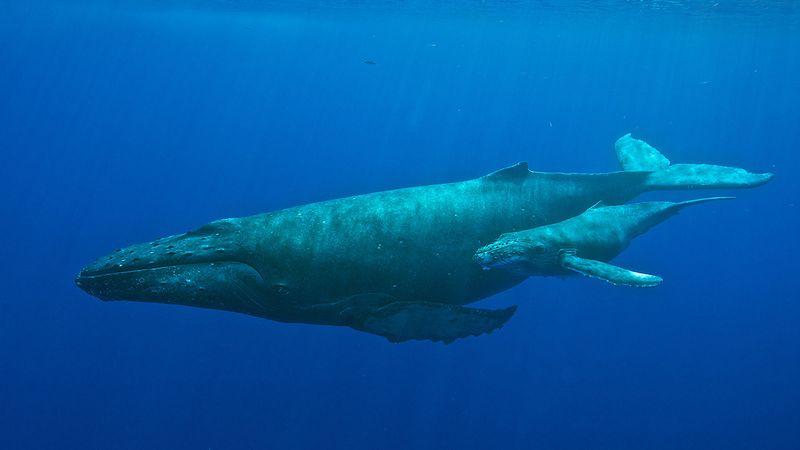
Every winter, Humpback Whales migrate to the warm waters surrounding Hawaii to breed and give birth. These gentle giants are known for their acrobatic breaches and melodic songs, which can be heard underwater for miles.
Whale watching is a popular activity in Hawaii, offering visitors a chance to see these magnificent creatures up close. The presence of Humpback Whales highlights the islands’ rich marine ecosystem. Their annual migration is a spectacular event that emphasizes the interconnection between Hawaii and the vast oceanic world.
Green Sea Turtle

The Green Sea Turtle, or Honu, is a beloved symbol of Hawaii’s marine life. These turtles are frequently spotted along the coasts, where they feed on seagrass and algae. With their distinctive green-hued shells, they are a delight to observe in the wild.
Conservation efforts have been instrumental in protecting the Honu, as they face threats from habitat loss and pollution. Visitors are encouraged to admire these turtles from a distance to ensure their preservation. The Green Sea Turtle serves as a reminder of Hawaii’s responsibility to protect its fragile marine ecosystems.
Manta Ray
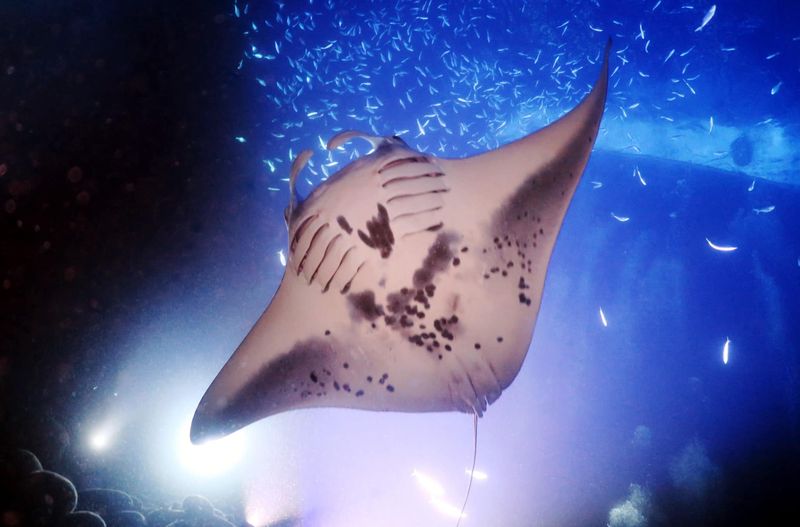
Manta Rays are graceful creatures known for their large, wing-like pectoral fins. In Hawaii, they are most commonly seen at night, feeding on plankton near coastal waters. Their gentle nature and fluid movements are mesmerizing.
Visitors to Hawaii often embark on night dives or snorkeling tours to witness these magnificent rays in their natural habitat. Manta Rays are a testament to the diverse marine life that thrives in Hawaiian waters. Their presence underscores the importance of ocean conservation to protect these majestic animals for future generations.
Hawaiian Hawk (ʻIo)
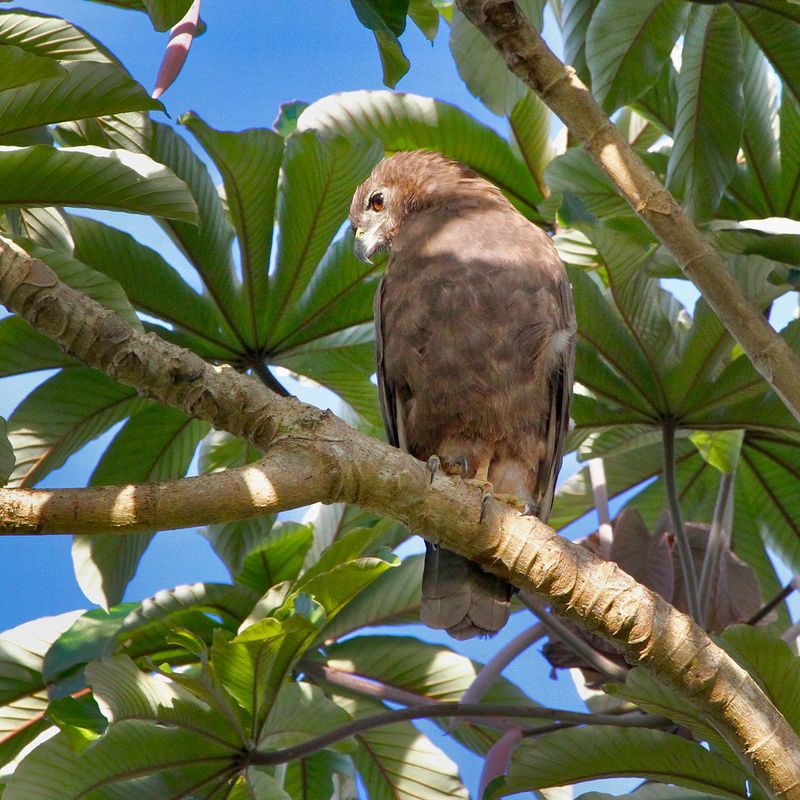
The Hawaiian Hawk, or ʻIo, is a raptor native to the Big Island of Hawaii. It is revered in Hawaiian culture and is considered an ʻaumakua, or guardian spirit. This bird of prey is recognizable by its sharp talons and keen eyesight.
The ʻIo primarily hunts small mammals and birds, showcasing its agility and prowess in flight. Efforts to conserve its forest habitat are critical, as deforestation poses a threat to its survival. The Hawaiian Hawk is a symbol of strength and resilience, reflecting the island’s rich cultural and natural heritage.
Laysan Albatross

The Laysan Albatross, known for its impressive wingspan, is a seabird that breeds primarily in the Northwestern Hawaiian Islands. These birds are expert fliers, capable of traveling vast distances across the ocean.
During the breeding season, they return to their nesting sites, where elaborate courtship dances can be observed. The Laysan Albatross is an integral part of Hawaii’s avian biodiversity. Their long journeys across the Pacific Ocean highlight the interconnectedness of marine ecosystems and the importance of preserving these vital habitats for the survival of seabirds.
Hawaiian Bobtail Squid
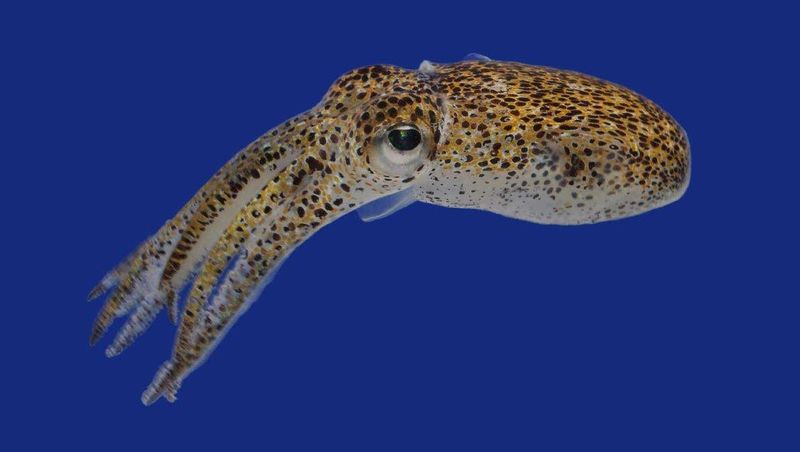
The Hawaiian Bobtail Squid is a small, nocturnal creature found in the shallow coastal waters of Hawaii. Known for its ability to produce light through bioluminescence, this squid has a symbiotic relationship with bacteria that allows it to glow.
This unique adaptation helps it avoid predators by camouflaging with moonlight. The bobtail squid plays a significant role in marine research, providing insights into symbiotic relationships and camouflage techniques. Encountering this tiny cephalopod underscores the incredible diversity of Hawaii’s marine life and the innovative strategies these species employ to survive.
Hawaiian Green Turtle
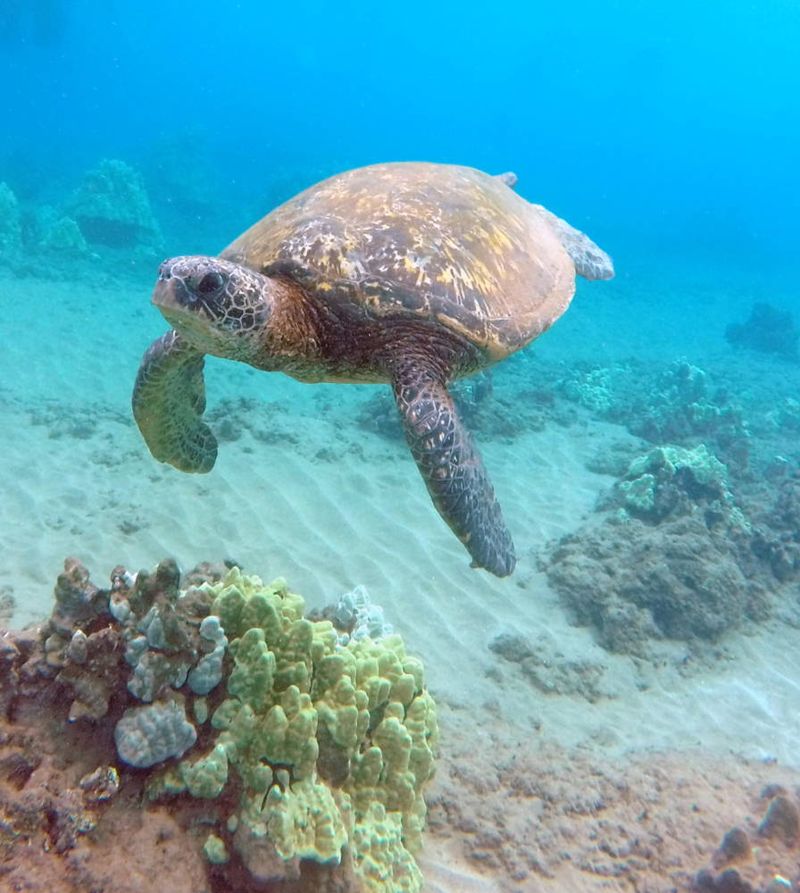
The Hawaiian Green Turtle, distinct from the Green Sea Turtle, frequents the islands’ shores for nesting and basking in the sun. These turtles are an iconic part of Hawaii’s coastal ecosystems and are often seen in shallow waters.
While resting on the sand, they capture the attention of beachgoers, highlighting the need for conservation efforts to protect their habitats. Encounters with the Hawaiian Green Turtle offer a glimpse into the delicate balance of life along Hawaii’s shores, reminding us of our responsibility to safeguard these ancient mariners.
Hawaiian Triggerfish (Humuhumunukunukuapua’a)
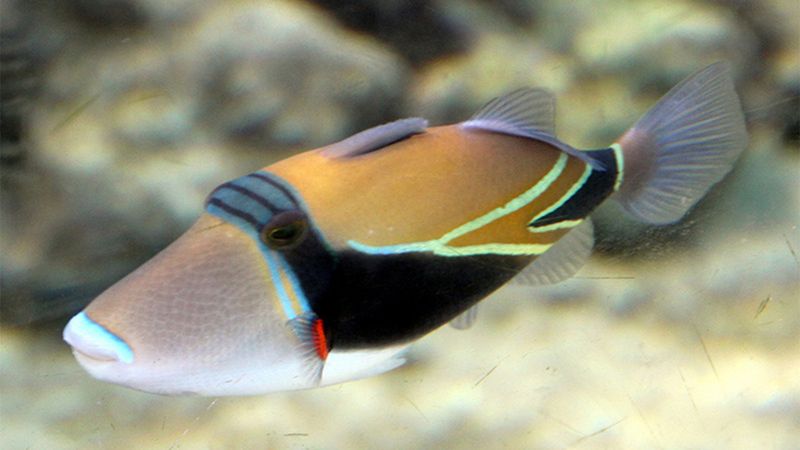
The Humuhumunukunukuapua’a, or Hawaiian Triggerfish, is the state fish of Hawaii, known for its vibrant colors and distinctive shape. Found in coral reefs, this fish is a delight for snorkelers and divers.
Its long name, derived from the Hawaiian language, reflects its cultural significance. The Humuhumu is well-adapted to its environment, using its fins to navigate the complex reef structures. Observing the Hawaiian Triggerfish in its natural habitat is a testament to the vibrant marine biodiversity that thrives in Hawaii’s waters and the importance of reef conservation.
Hawaiian Hoary Bat
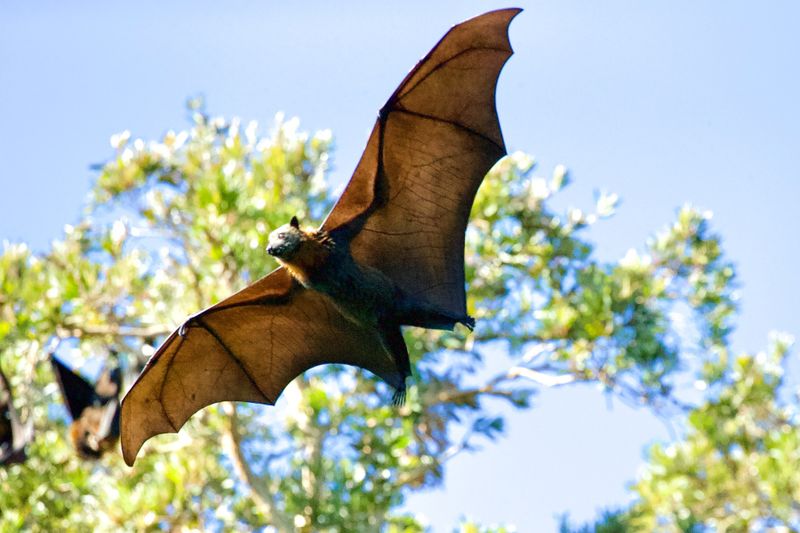
The Hawaiian Hoary Bat, or ʻŌpeʻapeʻa, is Hawaii’s only native land mammal. This elusive bat is primarily found in the forests of the Big Island, Maui, and Kauai. It is most active at dusk and dawn, when it forages for insects.
The ʻŌpeʻapeʻa is easily identified by its frosted fur, which gives it a hoary appearance. Conservation efforts are essential to protect its habitat from deforestation and invasive species. Witnessing this bat in flight is a rare and magical experience, showcasing the unique nocturnal wildlife of Hawaii’s islands.
Yellow Tang
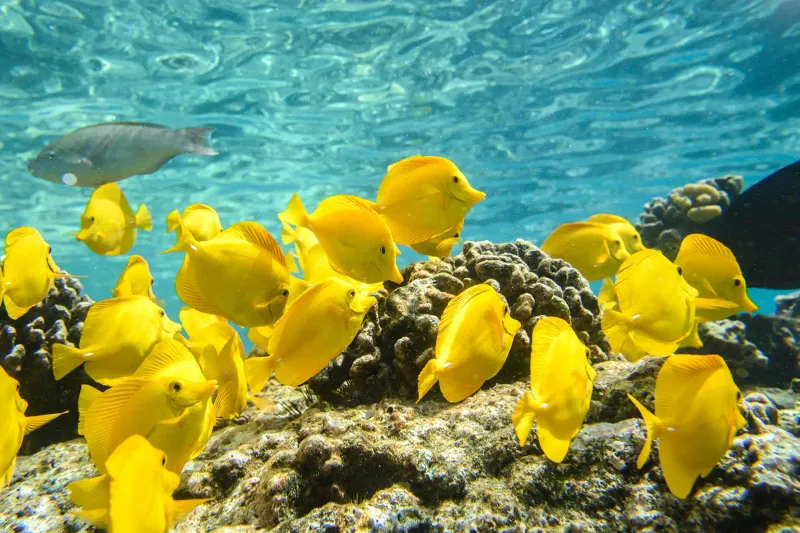
The Yellow Tang is a small, vibrant fish commonly seen in Hawaii’s coral reefs. Its bright yellow coloration makes it easy to spot, adding a splash of color to the underwater landscape.
These fish play a critical role in maintaining the health of coral reefs by grazing on algae. Visitors to Hawaii’s reefs can often see them darting in and out of coral formations. The presence of the Yellow Tang highlights the intricate balance of reef ecosystems and the importance of preserving these underwater habitats for future generations to enjoy.
Hawaiian Crow (ʻAlalā)
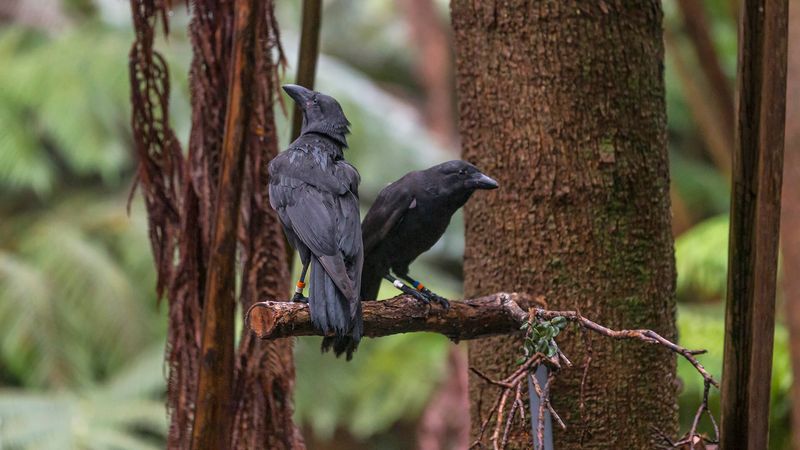
The Hawaiian Crow, or ʻAlalā, is a critically endangered bird native to the forests of Hawaii. Once extinct in the wild, intensive conservation efforts have reintroduced them to their natural habitat.
The ʻAlalā is known for its intelligence and complex vocalizations, making it a fascinating subject for avian enthusiasts. Efforts to restore their population highlight the importance of biodiversity and the challenges faced in conservation. Observing the ʻAlalā in the wild is a rare opportunity to witness the resilience of Hawaii’s native species and the dedication to preserving them.
Hawaiian Moorhen

The Hawaiian Moorhen, or ʻAlae ʻUla, is a medium-sized bird found in the wetlands of Oahu and Kauai. Recognizable by its red frontal shield and dark plumage, it is a shy and elusive bird.
Conservation efforts focus on protecting wetland habitats, crucial for the survival of the Hawaiian Moorhen. Observing this bird requires patience and keen observation skills. The presence of the Hawaiian Moorhen in these wetlands highlights the importance of ecosystem preservation and the delicate balance needed to support diverse wildlife populations in Hawaii.
Hawaiian Spinner Dolphin
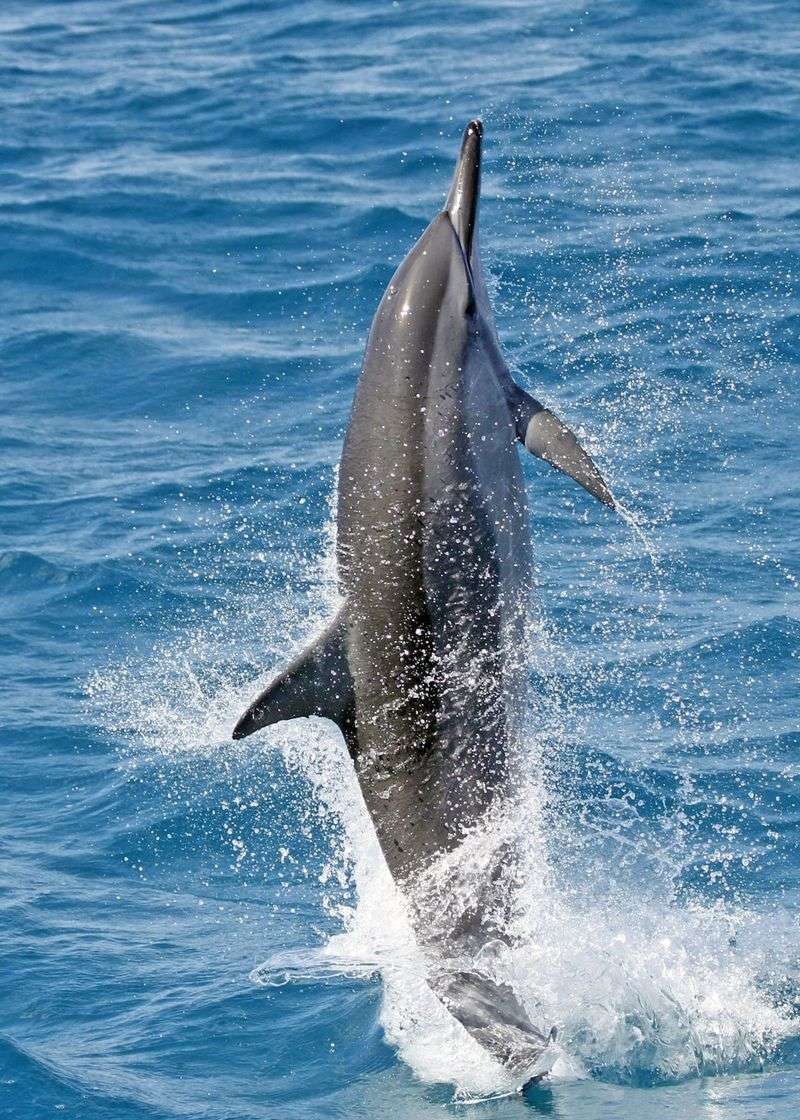
The Hawaiian Spinner Dolphin is known for its acrobatic displays, often seen leaping and spinning through the air. These dolphins inhabit the coastal waters of the Hawaiian Islands, where they hunt for fish and squid.
Interactions with Spinner Dolphins are regulated to ensure their well-being, as human activities can disrupt their natural behaviors. Observing these dolphins in the wild offers a glimpse into the dynamic marine ecosystems surrounding Hawaii. Their playful nature and energetic performances are an unforgettable sight, underscoring the need for responsible wildlife tourism.
Hawaiian Squirrelfish
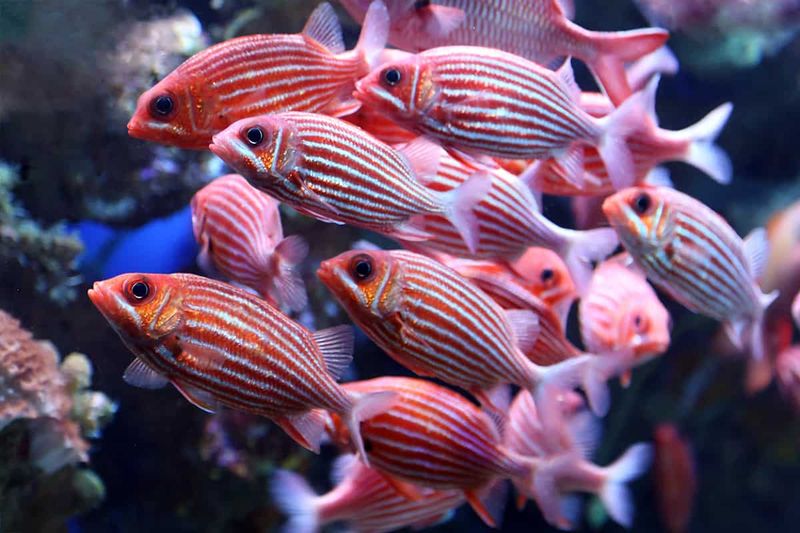
The Hawaiian Squirrelfish is a nocturnal species found in coral reefs, known for its large eyes and distinctive red coloration. During the day, they hide among the crevices of the reef, emerging at night to feed on small invertebrates.
These fish contribute to the reef’s nighttime activity and biodiversity. Visitors exploring Hawaii’s reefs on night dives may encounter the Hawaiian Squirrelfish, highlighting the diverse and active nocturnal life within these ecosystems. Their presence is a reminder of the delicate interplay between species that sustains the health and vibrancy of coral reefs.
Hawaiian Honeycreeper
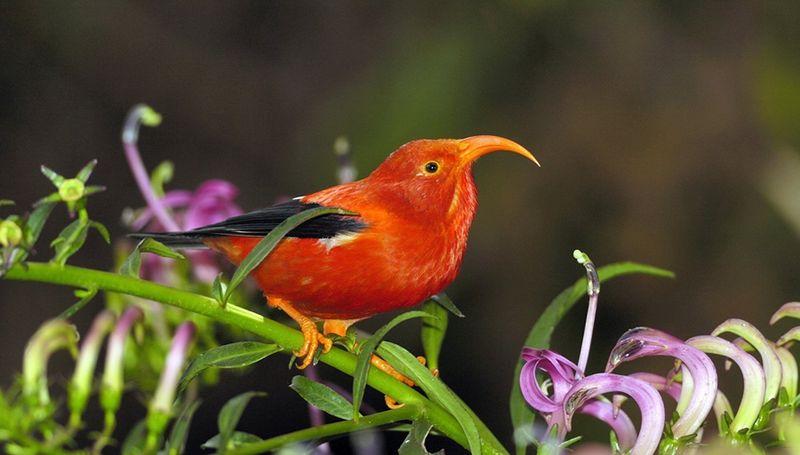
Hawaiian Honeycreepers are a diverse group of birds known for their vibrant colors and specialized bills. Found in native forests, they feed primarily on nectar, insects, and fruits, playing a crucial role in pollination.
Conservation efforts focus on protecting forest habitats from invasive species and diseases. These birds are a symbol of Hawaii’s unique avian diversity, showcasing the evolutionary adaptations that allow them to thrive in a variety of environments. Observing Hawaiian Honeycreepers in the wild offers insight into the rich biodiversity of the islands.
Hawaiian Monk Seal Pup
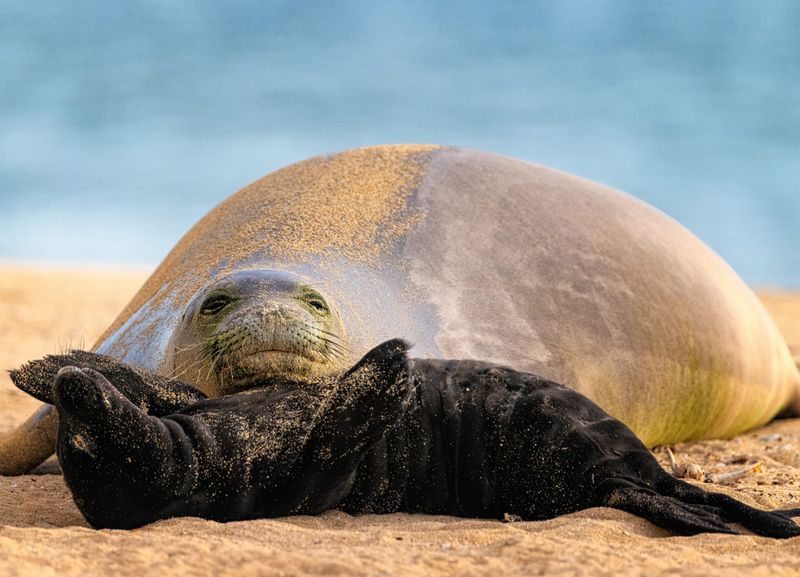
Hawaiian Monk Seal pups are born on the sandy beaches of the Hawaiian Islands, where they spend their early weeks nursing and growing under the watchful eye of their mothers.
These playful pups are vital to the survival of the species, as their population numbers are critically low. Conservation programs aim to protect these vulnerable young seals from threats such as predation and habitat disturbance. Observing a monk seal pup at play is a heartwarming experience, highlighting the ongoing efforts to protect and nurture Hawaii’s endangered marine life.
Hawaiian Sea Urchin
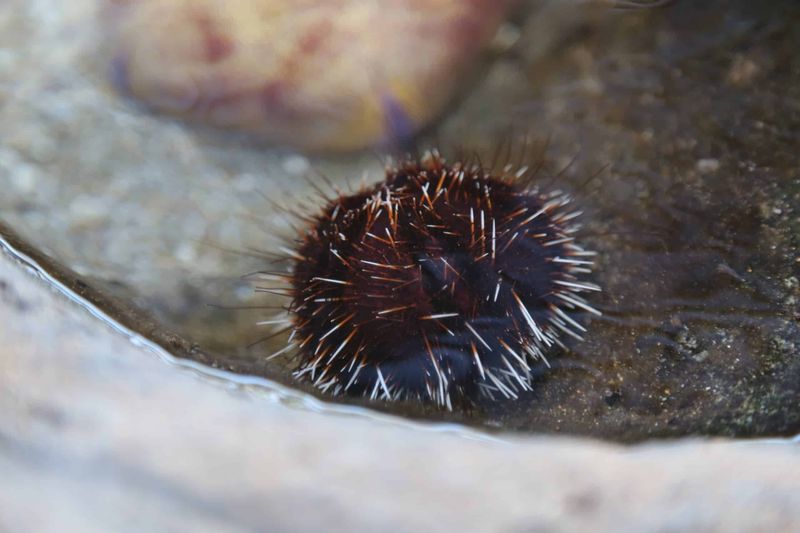
Hawaiian Sea Urchins are common inhabitants of the rocky intertidal zones and coral reefs around the islands. Their spiny exteriors provide protection from predators, while their vibrant hues add color to the marine landscape.
These urchins play a key role in the ecosystem, grazing on algae and helping to maintain coral reef health. Their presence is indicative of the intricate balance required to sustain Hawaii’s marine biodiversity. Observing these fascinating creatures offers insight into the complex relationships within coral reef communities and the need to protect these fragile environments.
Hawaiian Green Sea Turtle Nest
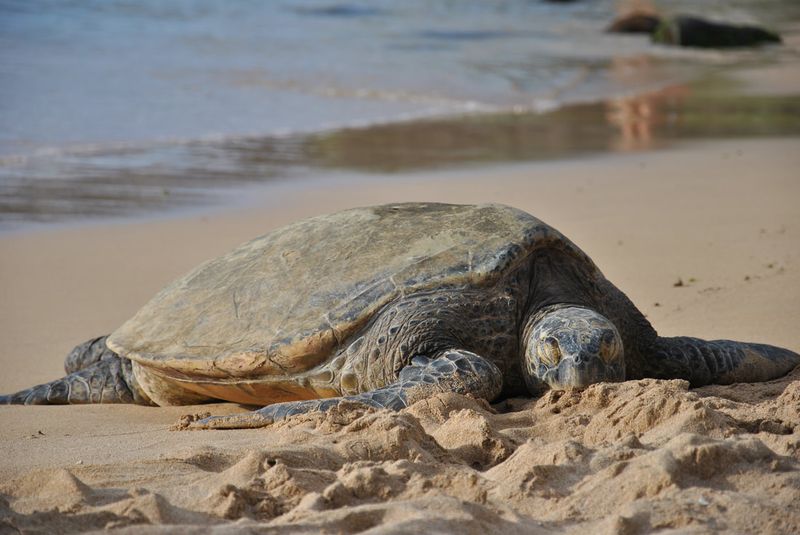
Hawaiian Green Sea Turtles return to the islands’ beaches to nest, laying eggs in the sand before returning to the sea. These nesting sites are crucial for the survival of the species, as hatchlings must make their way to the ocean upon emergence.
Conservation efforts focus on protecting nesting beaches from human interference and ensuring the safe passage of young turtles to the sea. Witnessing a turtle nest is a powerful reminder of the life cycle that continues on Hawaii’s shores, emphasizing the importance of preserving these critical habitats for future generations.
Hawaiian Snorkeler’s Parrotfish
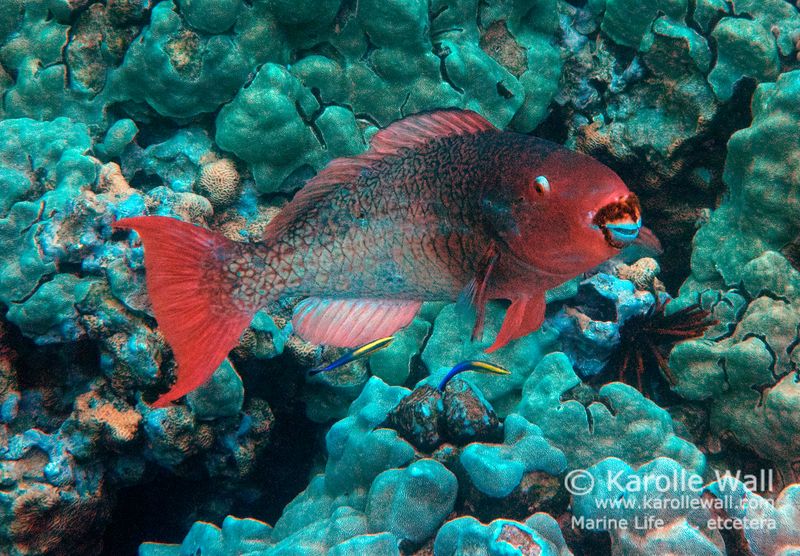
The Parrotfish is a vibrant and essential inhabitant of Hawaii’s coral reefs, known for its role in maintaining reef health. Its beak-like mouth allows it to graze on algae and coral, contributing to the creation of sand.
These fish are a favorite among snorkelers and divers exploring Hawaii’s underwater world. Their presence highlights the interconnectedness of reef ecosystems and the importance of preserving these environments. Observing Parrotfish in action provides a closer look at the dynamic and colorful life within Hawaii’s reefs, inviting us to cherish and protect these natural treasures.
Hawaiian Leaf Insect
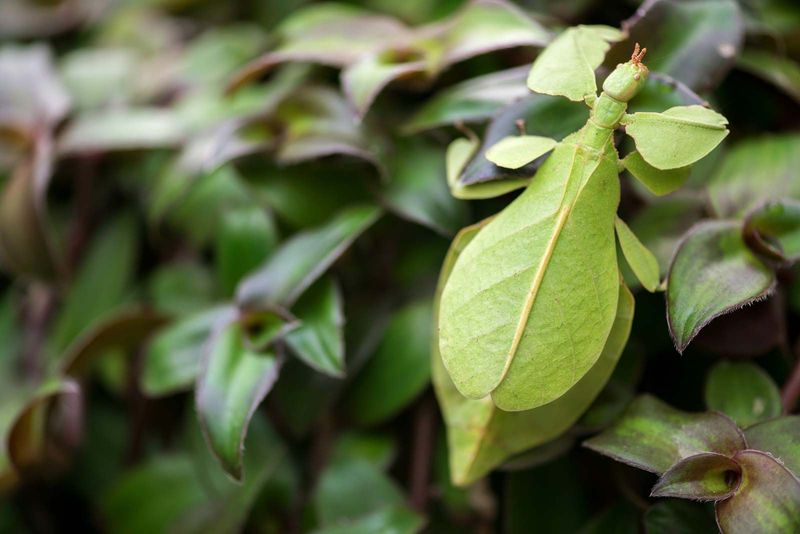
The Hawaiian Leaf Insect is a master of disguise, perfectly mimicking the appearance of a leaf to evade predators. Found in Hawaii’s lush forests, this insect is a testament to the ingenious survival strategies of island wildlife.
Their leaf-like appearance allows them to blend seamlessly into their surroundings, making them difficult to spot. The Hawaiian Leaf Insect’s unique adaptation highlights the incredible biodiversity of Hawaii’s terrestrial ecosystems. Observing these insects in their natural habitat offers a glimpse into the complex world of camouflage and adaptation in the animal kingdom.
Hawaiian Coral Polyps
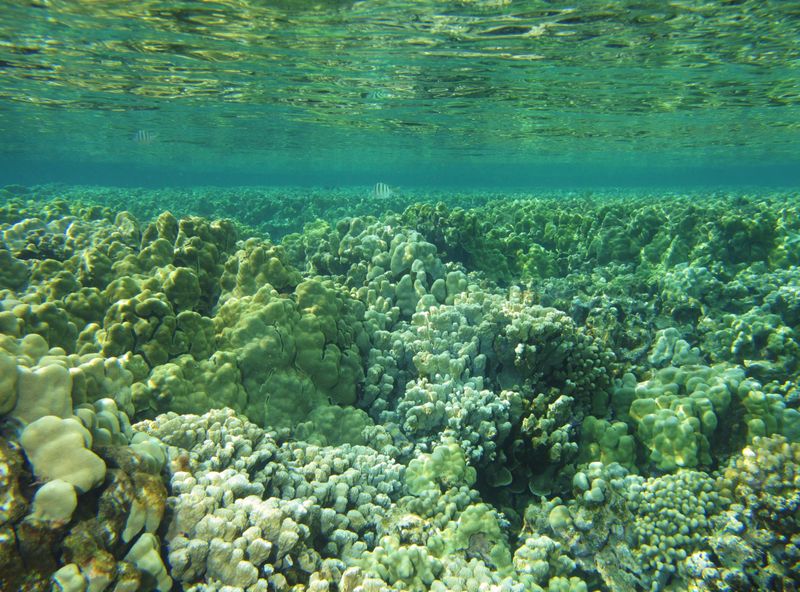
Hawaiian Coral Polyps are the architects of coral reefs, building the underwater structures that serve as habitats for countless marine species. These tiny organisms live in colonies, excreting calcium carbonate to form the hard skeletons of coral.
Their vibrant colors and intricate patterns contribute to the beauty of Hawaii’s reefs. Coral polyps are sensitive to environmental changes, making them indicators of reef health. Protecting these vital organisms is crucial for the preservation of marine biodiversity. Observing coral polyps in their natural setting underscores the importance of conservation efforts to safeguard Hawaii’s reefs.
Hawaiian Happy-Face Spider
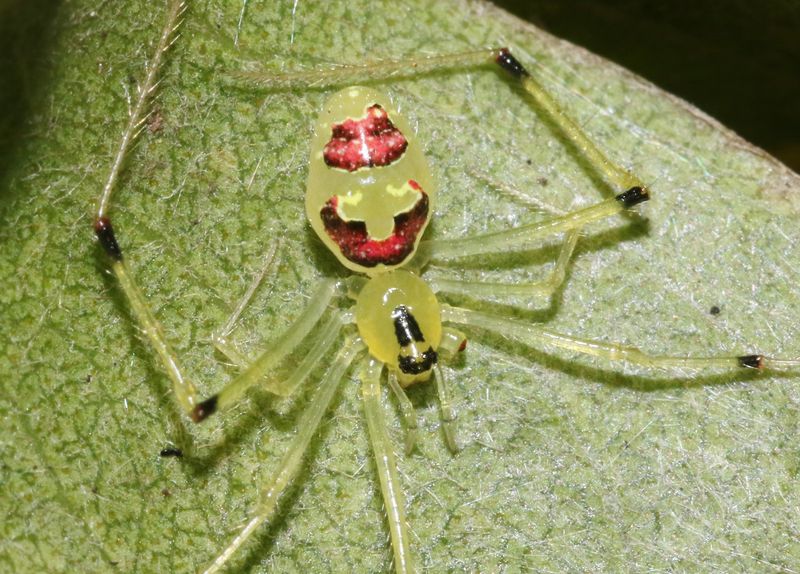
The Hawaiian Happy-Face Spider is a tiny yet captivating creature found only in the Hawaiian rainforests. Its name comes from the unique smiley face patterns on its abdomen, which vary from spider to spider. This arachnid thrives in the damp, verdant environment, where it weaves delicate webs to catch prey.
Found predominantly on the islands of Oahu and Maui, the Happy-Face Spider is a symbol of Hawaii’s rich biodiversity. Despite its small size, it plays a significant role in controlling insect populations. Spotting one requires patience and a keen eye, making it a delightful find for those exploring the islands.
Flamingo Tongue Snail
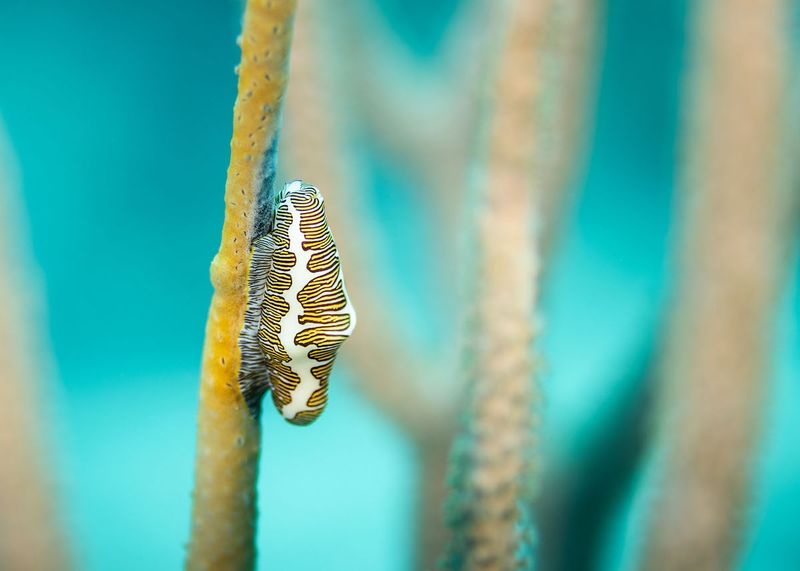
The Flamingo Tongue Snail, though not native to Hawaii, occasionally graces its coral reefs with a vibrant splash of color. Recognizable by its bright orange shell with black markings, this tiny mollusk is a sight to behold.
Its vivid appearance is actually a result of the snail’s mantle, which it wraps around its shell. This intriguing creature feeds on soft corals and is often spotted by divers exploring deeper waters.
While not harmful to the reefs, the Flamingo Tongue Snail’s presence signals a healthy ecosystem, making it an exciting discovery for underwater explorers.

